
47 Results

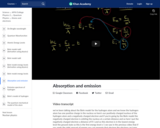
Using shell model diagram to relate absorption to emission. Derives relationship between emitted photon and energy levels, the Balmer-Rydberg equation. Created by Jay.
- Subject:
- Physical Science
- Physics
- Material Type:
- Lesson
- Provider:
- Khan Academy
- Provider Set:
- Association of American Medical Colleges
- Author:
- James Luer
- Date Added:
- 06/23/2014
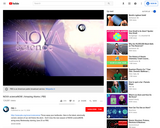
This brief video shows the relationship and movement of particles inside an atom.
- Subject:
- Physical Science
- Material Type:
- Lecture
- Provider:
- NOVA Science
- Provider Set:
- NOVA ScienceNOW
- Date Added:
- 07/15/2013
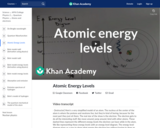
In this video, David explains how an atom can absorb and emit photons with particular values of energy and how to determine the allowed values.
- Subject:
- Physical Science
- Physics
- Material Type:
- Lesson
- Provider:
- Khan Academy
- Provider Set:
- Association of American Medical Colleges
- Author:
- David SantoPietro
- Date Added:
- 06/25/2018
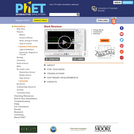
Explore the origin of energy bands in crystals of atoms. The structure of these bands determines how materials conduct electricity.
- Subject:
- Physical Science
- Physics
- Material Type:
- Simulation
- Provider:
- University of Colorado Boulder
- Provider Set:
- PhET Interactive Simulations
- Author:
- Carl Wieman
- Chris Malley
- Kathy Perkins
- Sam McKagan
- Date Added:
- 10/04/2006

Explore the origin of energy bands in crystals of atoms. The structure of these bands determines how materials conduct electricity.
- Subject:
- Physical Science
- Physics
- Material Type:
- Simulation
- Provider:
- University of Colorado Boulder
- Provider Set:
- PhET Interactive Simulations
- Author:
- Carl Wieman
- Chris Malley
- Kathy Perkins
- Sam McKagan
- Date Added:
- 07/02/2010

Look inside a resistor to see how it works. Increase the battery voltage to make more electrons flow though the resistor. Increase the resistance to block the flow of electrons. Watch the current and resistor temperature change.
- Subject:
- Physical Science
- Physics
- Material Type:
- Simulation
- Provider:
- University of Colorado Boulder
- Provider Set:
- PhET Interactive Simulations
- Author:
- Carl Wieman
- Sam Reid
- Date Added:
- 11/20/2008
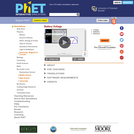
Look inside a battery to see how it works. Select the battery voltage and little stick figures move charges from one end of the battery to the other. A voltmeter tells you the resulting battery voltage.
- Subject:
- Physical Science
- Physics
- Material Type:
- Simulation
- Provider:
- University of Colorado Boulder
- Provider Set:
- PhET Interactive Simulations
- Author:
- Carl Wieman
- Sam Reid
- Date Added:
- 11/16/2007
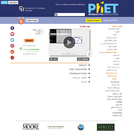
Look inside a battery to see how it works. Select the battery voltage and little stick figures move charges from one end of the battery to the other. A voltmeter tells you the resulting battery voltage.
- Subject:
- Physical Science
- Physics
- Material Type:
- Simulation
- Provider:
- University of Colorado Boulder
- Provider Set:
- PhET Interactive Simulations
- Author:
- Carl Wieman
- Sam Reid
- Date Added:
- 07/02/2008
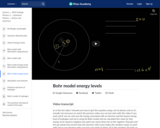
Calculating electron energy for levels n=1 to 3. Drawing a shell model diagram and an energy diagram for hydrogen, and then using the diagrams to calculate the energy required to excite an electron between different energy levels. Created by Jay.
- Subject:
- Physical Science
- Physics
- Material Type:
- Lesson
- Provider:
- Khan Academy
- Provider Set:
- Association of American Medical Colleges
- Author:
- James Luer
- Date Added:
- 06/17/2014
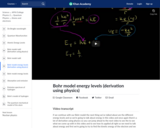
Using classical physics to calculate the energy of electrons in Bohr model. Solving for energy of ground state and more generally for level n. Created by Jay
- Subject:
- Physical Science
- Physics
- Material Type:
- Lesson
- Provider:
- Khan Academy
- Provider Set:
- Association of American Medical Colleges
- Author:
- James Luer
- Date Added:
- 06/17/2014
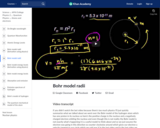
Using equation for Bohr model radii to draw shell model for n=1 to 3, and calculating the velocity of a ground state electron. Created by Jay
- Subject:
- Physical Science
- Physics
- Material Type:
- Lesson
- Provider:
- Khan Academy
- Provider Set:
- Association of American Medical Colleges
- Author:
- James Luer
- Date Added:
- 06/17/2014
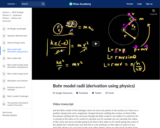
Using classical physics and vectors, plus assumption that angular momentum of electron is quantized, to derive the equation for Bohr model radii. Created by Jay.
- Subject:
- Physical Science
- Physics
- Material Type:
- Lesson
- Provider:
- Khan Academy
- Provider Set:
- Association of American Medical Colleges
- Author:
- James Luer
- Date Added:
- 06/17/2014

In this hands-on activity, students explore the electrical force that takes place between two objects. Each student builds an electroscope and uses the device to draw conclusions about objects' charge intensity. Students also determine what factors influence electric force.
- Subject:
- Applied Science
- Engineering
- Physical Science
- Physics
- Material Type:
- Activity/Lab
- Provider:
- TeachEngineering
- Provider Set:
- TeachEngineering
- Author:
- Daria Kotys-Schwartz
- Denise Carlson
- Joe Friedrichsen
- Malinda Schaefer Zarske
- Sabre Duren
- Xochitl Zamora Thompson
- Date Added:
- 10/14/2015
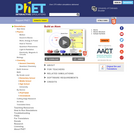
Build an atom out of protons, neutrons, and electrons, and see how the element, charge, and mass change. Then play a game to test your ideas!
- Subject:
- Chemistry
- Physical Science
- Material Type:
- Simulation
- Provider:
- University of Colorado Boulder
- Provider Set:
- PhET Interactive Simulations
- Author:
- Jack Barbera
- John Blanco
- Kathy Perkins
- Kelly Lancaster
- Patricia Loeblein
- Robert Parson
- Sam Reid
- Suzanne Brahmia
- Date Added:
- 07/13/2011

Students use balloons to perform several simple experiments to explore static electricity and charge polarization.
- Subject:
- Applied Science
- Engineering
- Physical Science
- Physics
- Material Type:
- Activity/Lab
- Provider:
- TeachEngineering
- Provider Set:
- TeachEngineering
- Author:
- Daria Kotys-Schwartz
- Denise W. Carlson
- Joe Friedrichsen
- Malinda Schaefer Zarske
- Sabre Duren
- Xochitl Zamora Thompson
- Date Added:
- 10/14/2015
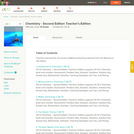
A work in progress, CK-12 Chemistry Teacher's Edition supports its Chemistry book covering: Matter; Atomic Structure; The Elements; Stoichiometry; Chemical Kinetics; Physical States of Matter; Thermodynamics; Nuclear and Organic Chemistry.
- Subject:
- Chemistry
- Physical Science
- Material Type:
- Activity/Lab
- Textbook
- Provider:
- CK-12 Foundation
- Provider Set:
- CK-12 FlexBook
- Author:
- Parsons, Richard
- Robinson, Shonna
- Date Added:
- 02/12/2010

This series of instructional videos was created by Camosun College for a Canadian edition of the OpenStax "Concepts of Biology" open textbook as part of the BC Open Textbook Project. The lectures are taught by Charles Molnar, a Biology instructor at Camosun College. The videos are accompanied by transcripts.
- Subject:
- Life Science
- Material Type:
- Lecture
- Date Added:
- 08/15/2016

Students make a simple conductivity tester using a battery and light bulb. They learn the difference between conductors and insulators of electrical energy as they test a variety of materials for their ability to conduct electricity.
- Subject:
- Applied Science
- Engineering
- Physical Science
- Physics
- Material Type:
- Activity/Lab
- Provider:
- TeachEngineering
- Provider Set:
- TeachEngineering
- Author:
- Denise Carlson
- Jeff Lyng
- Malinda Schaefer Zarske
- Sharon D. Perez-Suarez
- Date Added:
- 10/14/2015
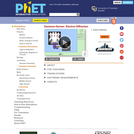
Simulate the original experiment that proved that electrons can behave as waves. Watch electrons diffract off a crystal of atoms, interfering with themselves to create peaks and troughs of probability.
- Subject:
- Physical Science
- Physics
- Material Type:
- Simulation
- Provider:
- University of Colorado Boulder
- Provider Set:
- PhET Interactive Simulations
- Author:
- Carl Wieman
- Kathy Perkins
- Sam McKagan
- Sam Reid
- Date Added:
- 10/02/2006